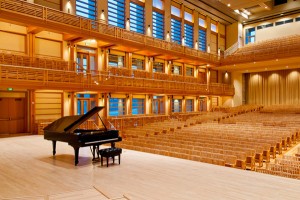The front page of today’s New York Times Arts section features two articles that sum up the state of architecture today. The newspaper’s music critic Anthony Tommasini reviews an inaugural performance in new concert hall in Sonoma State University, and Robin Pogrebin reports on Frank Gehry’s appointment to design an arts campus in Miami. The architect of the hall at Sonoma State is William Rawn, whose Seiji Ozawa Hall in Tanglewood has been acoustically rated as the fourth-best concert hall in the nation. Tommasini calls Weill Hall “a beautiful space” and the sound of the hall “rich, clear and true” (although the Times architecture critic chose not to weigh in on the design of the hall). In other words, the critique of Weill Hall is based on the building’s actual performance as a music venue. By contrast, the Miami story is about a building that has not yet been built, not even designed. Gehry is a remarkable architect, but does his mere selection by a client really qualify as news? The answer is yes, for in architecture today, the new-new thing rules. It’s true that architects have always been more interested in design than in reality, that’s why prizes are regularly awarded to buildings before they are built, which is rather like rating a restaurant on the basis of its menu, without tasting the dishes. Similarly, unbuilt projects are critiqued in the media on the basis of a model or a sketch, while completed buildings are assessed after a “press day,” before they are actually put into use. But the time to evaluate a building is after years of use, when the rough edges have been worn smooth, and it is possible to judge the durability—aesthetically as well as physically—of the design. But, of course, that would not be news.


“But, of course, that would not be news.” No but that is what makes good architecture.